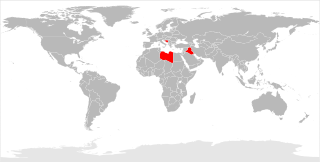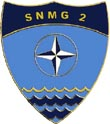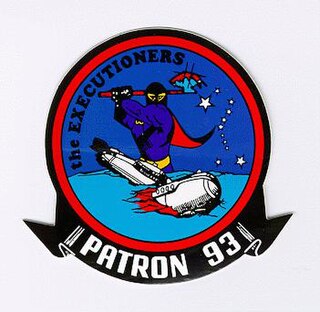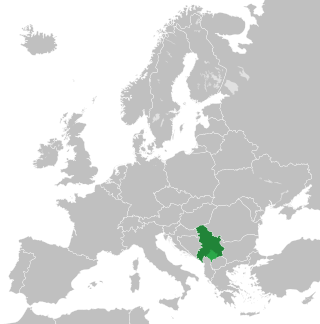
A no-fly zone, also known as a no-flight zone (NFZ), or air exclusion zone (AEZ), is a territory or area established by a military power over which certain aircraft are not permitted to fly. Such zones are usually set up in an enemy power's territory during a conflict for humanitarian or military reasons without consent of the enemy state, similar in concept to an aerial demilitarized zone, and usually intend to prohibit the enemy's military aircraft from operating in the region. Military action is employed by the enforcing state and, depending on the terms of the NFZ, may include preemptive attacks to prevent potential violations, reactive force targeted at violating aircraft, or surveillance with no use of force. Air exclusion zones and anti-aircraft defences are sometimes set up in a civilian context, for example to protect sensitive locations, or events such as the 2012 London Olympic Games, against terrorist air attack. A no-fly zone is generally not considered a form of aerial blockade due to its more limited scope compared to an aerial blockade.

HMS Cumberland was a Batch 3 Type 22 frigate of the British Royal Navy. She was launched in 1986 and commissioned on 10 June 1989. The frigate was on station during the First Gulf War and was part of the Devonport Flotilla based at Devonport Dockyard. Cumberland was decommissioned on 23 June 2011.

HMS Chatham was a Batch 3 Type 22 frigate of the British Royal Navy. She was decommissioned on 8 February 2011.
The Beira Patrol was a blockade of oil shipments to Rhodesia through Beira, Mozambique, resulting from United Nations trade sanctions on Rhodesia.

USS Nicholas (FFG-47), an Oliver Hazard Perry-class frigate, was the third ship of the United States Navy to be named for Major Samuel Nicholas, the first commanding officer of the United States Marines. A third-generation guided missile frigate of the Oliver Hazard Perry class, she was laid down as Bath Iron Works hull number 388 on 27 September 1982 and launched 23 April 1983. Sponsor at her commissioning there on 10 March 1984 was the same Mrs. Edward B. Tryon who sponsored DD 449 in 1942.

Standing NATO Maritime Group One (SNMG1) is one of NATO's standing naval maritime immediate reaction forces. SNMG1 consists of four to six destroyers and frigates. Its role is to provide NATO with an immediate operational response capability.

Standing NATO Maritime Group 2 (SNMG2) is a North Atlantic Treaty Organization (NATO) standing maritime immediate reaction force. SNMG2 consists of four to six destroyers and frigates. Its role is to provide NATO with an immediate operational response capability.

Operation Deliberate Force was a sustained air campaign conducted by NATO, in concert with the UNPROFOR ground operations, to undermine the military capability of the Army of Republika Srpska, which had threatened and attacked UN-designated "safe areas" in Bosnia and Herzegovina during the Bosnian War with the Srebrenica genocide and Markale massacres, precipitating the intervention. The shelling of the Sarajevo marketplace on 28 August 1995 by the VRS is considered to be the immediate instigating factor behind NATO's decision to launch the operation.

HMCS Iroquois was the lead ship of the Iroquois-class destroyers of the Royal Canadian Navy, also known as the Tribal class or the 280 class. The second vessel to carry the name, she carried the hull number DDG 280. Entering service in 1972 she was assigned to Maritime Forces Atlantic (MARLANT) and was homeported at CFB Halifax. Iroquois was deployed overseas for blockade and anti-terrorism duties, including participating in Operation Apollo in 2002–03. Taken out of service in 2014 and paid off in 2015.

Operation Sharp Guard was a multi-year joint naval blockade in the Adriatic Sea by NATO and the Western European Union on shipments to the former Yugoslavia. Warships and maritime patrol aircraft from 14 countries were involved in searching for and stopping blockade runners. The operation began on 15 June 1993. It was suspended on 19 June 1996, and was terminated on 2 October 1996.

Operation Sky Monitor was a NATO mission to monitor unauthorized flights in the airspace of Bosnia and Herzegovina during the Bosnian War. The operation began in response to United Nations Security Council Resolution 781, which established a ban on the use of military aircraft in Bosnian airspace, and requested the aid of member states in monitoring compliance. Beginning on October 16, 1992, NATO monitored violations of the no-fly zone using E-3 Sentry NAEW aircraft based in Germany, Italy, Greece, and the United Kingdom. The operation documented more than 500 violations of the no-fly zone by April 1993. In response to this high volume of unauthorized flights, the Security Council passed Resolution 816, which authorized NATO to enforce the no-fly zone, and engage violators. In response, NATO deactivated Sky Monitor on April 12, 1993, transferring its forces to the newly established Operation Deny Flight.

The NATO intervention in Bosnia and Herzegovina was a series of actions undertaken by NATO whose stated aim was to establish long-term peace during and after the Bosnian War. NATO's intervention began as largely political and symbolic, but gradually expanded to include large-scale air operations and the deployment of approximately 60,000 soldiers of the Implementation Force.
The Battle of the Dalmatian Channels was a three-day confrontation between three tactical groups of Yugoslav Navy ships and coastal artillery, and a detachment of naval commandos of the Croatian Navy fought on 14–16 November 1991 during the Croatian War of Independence. On 14 November, the commandos torpedoed the Mirna-class patrol boat PČ-176 Mukos close to the island of Brač in the Split Channel of the Adriatic Sea, prompting a Yugoslav naval bombardment of Brač and Šolta Island the same day. The drifting Mukos was salvaged by Croatian civilian boats and beached at Nečujam bay.

On 19 March 2011, a multi-state NATO-led coalition began a military intervention in Libya to implement United Nations Security Council Resolution 1973, in response to events during the First Libyan Civil War. With ten votes in favour and five abstentions, the intent of the UN Security Council was to have "an immediate ceasefire in Libya, including an end to the current attacks against civilians, which it said might constitute 'crimes against humanity' ... [imposing] a ban on all flights in the country's airspace — a no-fly zone — and tightened sanctions on the Muammar Gaddafi regime and its supporters."

Operation Mobile was the name given to Canadian Forces activities in the 2011 military intervention in Libya. The United States' counterpart to this was Operation Odyssey Dawn, the French counterpart was Opération Harmattan and the British counterpart was Operation Ellamy. The no-fly zone was proposed during the Libyan Civil War to prevent government forces loyal to Muammar Gaddafi from carrying out air attacks on anti-Gaddafi forces and civilians. The demonstrations in Libya were part of the larger Arab Spring movement that began in the country of Tunisia on 18 December 2010. When demonstrations began in Libya, the government of Muammar Gaddafi responded with systematic attacks by air and ground forces, and repression of the protesters. In a speech, Gaddafi promised to chase down the protesters and cleanse the country "house by house". Several countries prepared to take immediate military action at a conference in Paris on 19 March.

Operation Unified Protector was a NATO operation in 2011 enforcing United Nations Security Council resolutions 1970 and 1973 concerning the Libyan Civil War and adopted on 26 February and 17 March 2011, respectively. These resolutions imposed sanctions on key members of the Gaddafi government and authorized NATO to implement an arms embargo, a no-fly zone and to use all means necessary, short of foreign occupation, to protect Libyan civilians and civilian populated areas.
Allied Naval Forces Southern Europe (NAVSOUTH) was a Component Command in NATO's Allied Forces Southern Europe (AFSOUTH).

VP-93, nicknamed the Executioners, was a Patrol Squadron of the U.S. Navy Reserve. It was the second squadron to be assigned the VP-93 designation. The squadron was established on 1 July 1976 and disestablished 18 years later, on 30 September 1994. It flew the Lockheed P-3 Orion, and was based at NAF Detroit during its entire life. Units of the squadron made 17 major overseas deployments.

During the Yugoslav Wars of the 1990s and early 2000s, several rounds of international sanctions were imposed against the former Yugoslav republics of Serbia and Montenegro that formed a new country called the Federal Republic of Yugoslavia.

The European Union Naval Force Mediterranean Operation Irini was launched on 31 March 2020 with the primary mission to enforce the United Nations arms embargo to Libya due to the Second Libyan Civil War. Operation Irini is a European Union military operation under the umbrella of the Common Security and Defense Policy (CSDP). The operation is expected to use aerial, maritime and satellite assets.


















